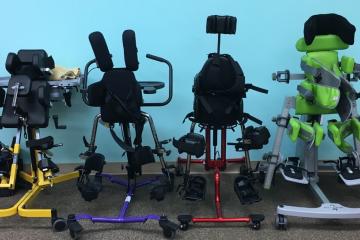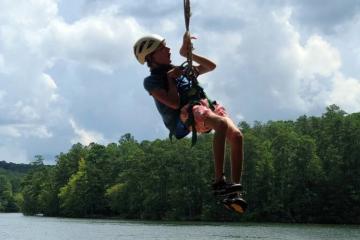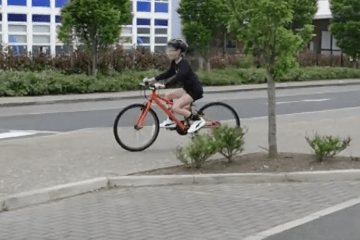Stakeholder Perspectives on Pediatric Powered Wheelchair Standing Devices

This study explored various people’s perspectives regarding the use of pediatric powered wheelchair standing devices (PWSDs). Eight children who used a PWSD, 12 parents of children who used a PWSD, 12 rehabilitation professionals, and three PWSD manufacturers were interviewed in the study.
Three main topics were found:
1) ‘Stand-on-demand’ revealed how participants perceived PWSDs as allowing children to stand whenever and wherever they wanted. Performing in a play, singing in a choir, playing with friends, working at a grocery store, partaking in chemistry lab, doing chores at home and in the yard, and eating at restaurants with high-top tables were all mentioned as situations where children’s participation was enhanced through PWSD use. Standing in a PWSD also reportedly permitted children to better ‘see’ at museums, sporting events, parades, and other crowded venues.
2) ‘It’s more than weight-bearing’ uncovered participants’ perceptions of a wide range of benefits from PWSD use. Many felt standing in a PWSD increased confidence and helped children to view themselves as ‘able’, thereby increasing their self-esteem. Many participants reported perceived improvements such as in maintaining or increasing range of motion, improving posture, decreasing pain, improved breathing, and increased opportunities for pressure relief.
3) ‘Ecosystems (i.e. complex interconnected systems) influencing PWSD acquisition and use’ revealed factors perceived as influencing children’s procurement and use of a PWSD. The funding process and insurance issues were consistently mentioned as barriers to obtaining a PWSD. Many participants perceived the size of PWSDs as a barrier to obtaining a PWSD for a child. Therapists’ and physicians’ lack of awareness and knowledge about PWSDs was another perceived barrier, reportedly forcing parents to be the driving force behind their child obtaining a PWSD.
This study laid the foundation for our current small-scale clinical trial and longitudinal studies involving children who use a PWSD.
‘Stand-on-demand’ revealed how participants perceived PWSDs as allowing children to stand whenever and wherever they wanted.






